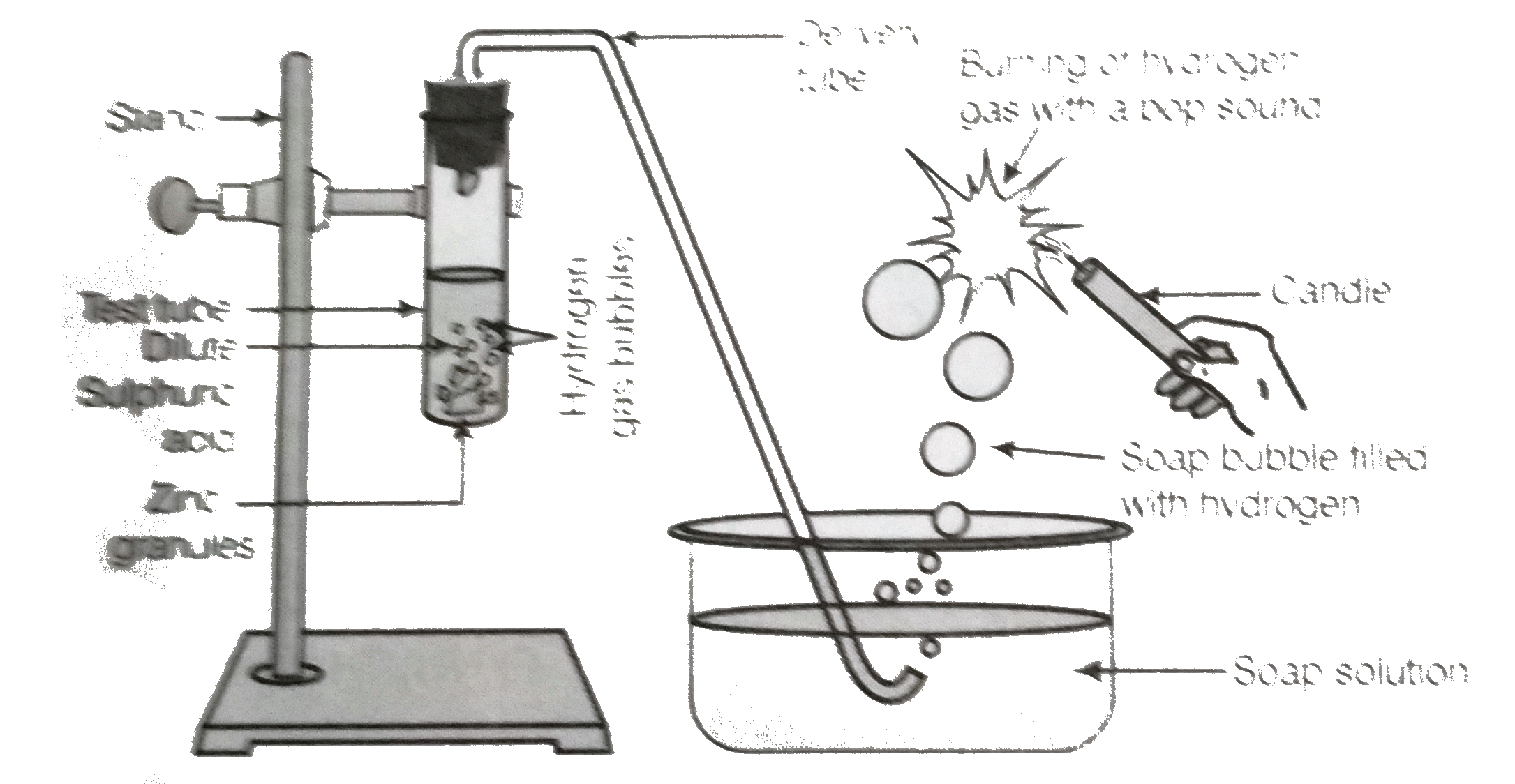When the same amount of zinc is treated separately with excess of sulphuric acid and excess of sodium hydroxide, the ratio of volumes of hydrogen evolved is
(a)1:1
(b)1:2
(c)2:1
(d) 9:4
1:1
1:2
2:1
9:4
The correct Answer is:A
To solve the problem, we need to analyze the reactions that occur when zinc is treated with excess sulfuric acid and excess sodium hydroxide.
Step 1: Reaction of Zinc with Sulfuric Acid
When zinc (Zn) reacts with sulfuric acid (H₂SO₄), the reaction can be represented as follows:
Zn+H2SO4→ZnSO4+H2↑
In this reaction, one mole of zinc reacts with one mole of sulfuric acid to produce one mole of zinc sulfate and one mole of hydrogen gas (H₂). Thus, for every mole of zinc, one mole of hydrogen gas is evolved.
Step 2: Reaction of Zinc with Sodium Hydroxide
When zinc reacts with sodium hydroxide (NaOH), the reaction can be represented as:
Zn+2NaOH→Na2Zn(OH)4+H2↑
In this reaction, one mole of zinc reacts with two moles of sodium hydroxide to produce sodium zincate and one mole of hydrogen gas. Again, for every mole of zinc, one mole of hydrogen gas is evolved.
Step 3: Comparing the Volumes of Hydrogen Evolved
From both reactions, we observe that:
- In the reaction with sulfuric acid, 1 mole of hydrogen is produced per mole of zinc.
- In the reaction with sodium hydroxide, 1 mole of hydrogen is also produced per mole of zinc.
Since the same amount of zinc is used in both reactions, the volume of hydrogen gas evolved in both cases will be the same.
Conclusion
The ratio of the volumes of hydrogen evolved when zinc is treated with excess sulfuric acid and excess sodium hydroxide is:
Volume of H2 from H2SO4:Volume of H2 from NaOH=1:1
Thus, the correct answer is (a) 1:1.
---
When zinc (Zn) reacts with sulfuric acid (H₂SO₄), the reaction can be represented as follows:
When zinc reacts with sodium hydroxide (NaOH), the reaction can be represented as:
From both reactions, we observe that:
- In the reaction with sulfuric acid, 1 mole of hydrogen is produced per mole of zinc.
- In the reaction with sodium hydroxide, 1 mole of hydrogen is also produced per mole of zinc.
The ratio of the volumes of hydrogen evolved when zinc is treated with excess sulfuric acid and excess sodium hydroxide is:
Topper's Solved these Questions
- BOOK - ICSECHAPTER - HYDROGENEXERCISE - TRUE OR FALSE. TYPE QUESTIONS15videos
HYDROGEN
- BOOK - ICSECHAPTER - HYDROGENEXERCISE - FILL IN THE BLANKS. TYPE QUESTIONS15videos
HYDROGEN
- BOOK - ICSECHAPTER - HYDROGENEXERCISE - ESSAY (LONG ANSWER) TYPE QUESTIONS29videos
HYDROGEN
- BOOK - ICSECHAPTER - HYDROCARBONS EXERCISE - NCERT TEXT-BOOK EXERCISES46videos
HYDROCARBONS
- BOOK - ICSECHAPTER - ORGANIC CHEMISTRY : SOME BASIC PRINCIPLES AND TECHNIQUES EXERCISE - NCERT TEXT-BOOK EXERCISES (WITH HINTS AND SOLUTIONS )72videos
ORGANIC CHEMISTRY : SOME BASIC PRINCIPLES AND TECHNIQUES
Similar Questions
Knowledge Check
- Question 1 - Select One
The ammonia evolved from the treatment of 0.30 g of an organic compound for the estimation of nitrogen was passed in 100 mL of 0.1 M sulphuric acid. The excess of acid required 20 mL of 0.5 M sodium hydroxide solution for complete neutralisation. The organic compound is:
acetamide
benzamide
urea
thioureaAacetamideBbenzamideCureaDthiourea
5 g of zinc is treated separately with an excess of
(a) dilute hydrochloric acid and
(b) aqueous sodium hydroxide
The ratio of the volumes of H2 evolved in these two reactions isView SolutionHow much zinc should be treated with excess of dilute hydrochloric acid to obtain 2.24 litres of hydrogen at S.T.P.
View SolutionA triangle and a parallelogram are on the same base and between the same parallels. The ratio of the areas of triangle and parallelogram is
(a)1:1
(b) 1:2
(c) 2:1
(d) 1:3View SolutionCalculate the volume of hydrogen liberated at N.T.P. when 500cm3 of 0.5N sulphuric acid react with excess of zinc.
View SolutionIf the ratio of volumes of two spheres is 1:8, then the ratio of their surface area is 1:2 (b) 1:4 (c) 1:8 (d) 1:16
View SolutionIf the ratio of the areas of two square is 9:1, then the ratio of their perimeters is (a) 2:1 (b) 3:1 (c) 3:2 (d) 4:1
View SolutionIn the following schematic diagram for the preparation of hydrogen gas as shown in the figure what would happen if the following changes are made?

(a) In place of zinc granules , same amount of zinc dust is taken in the test tube
(b) Instead of dilute sulphuric acid , dilute hydrochloric acid is taken.
(c ) In place of zinc, copper turnings are taken
(d) Sodium hydroxide is taken in place of dilute sulphuric acid and the tube is heated.View Solution

